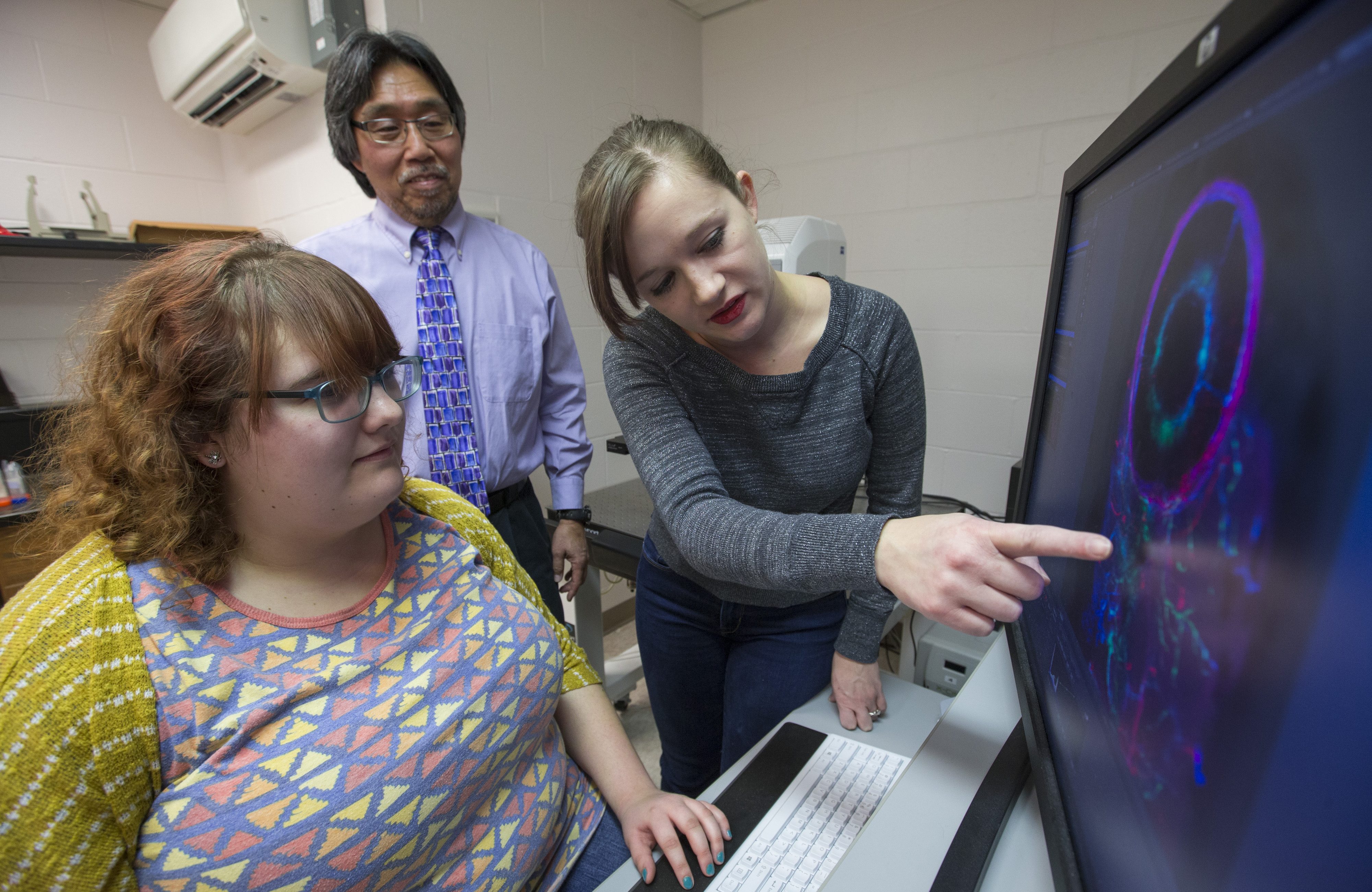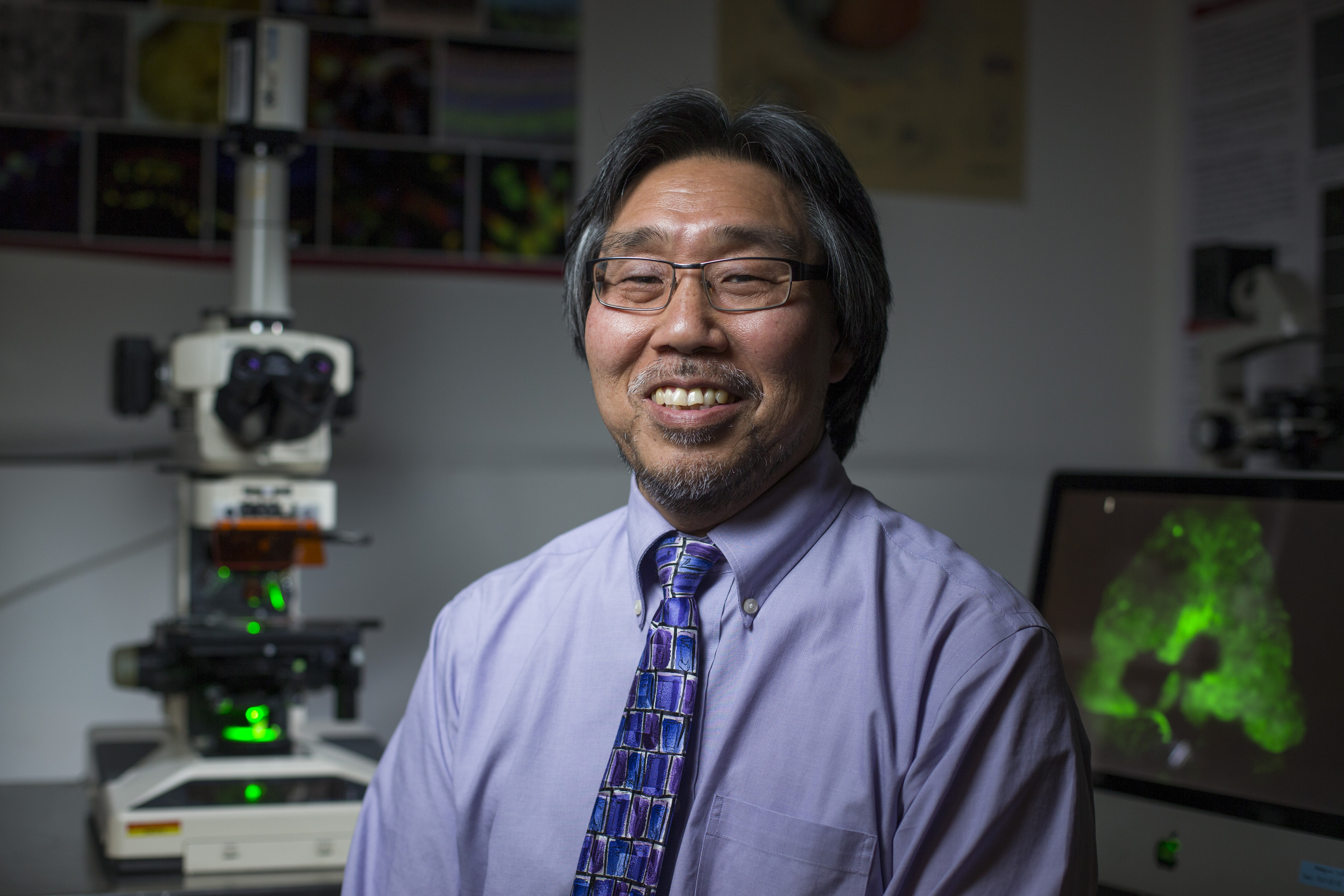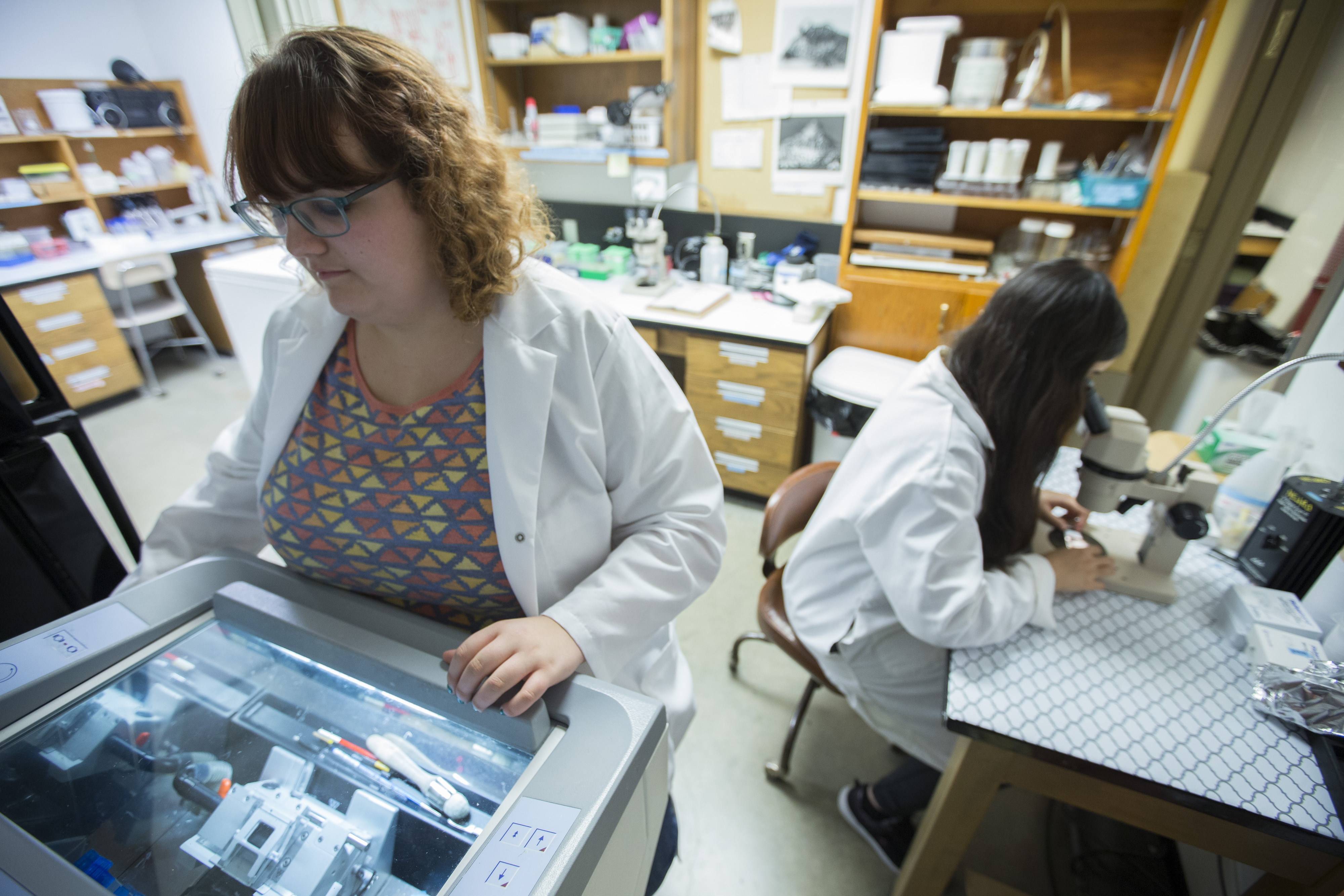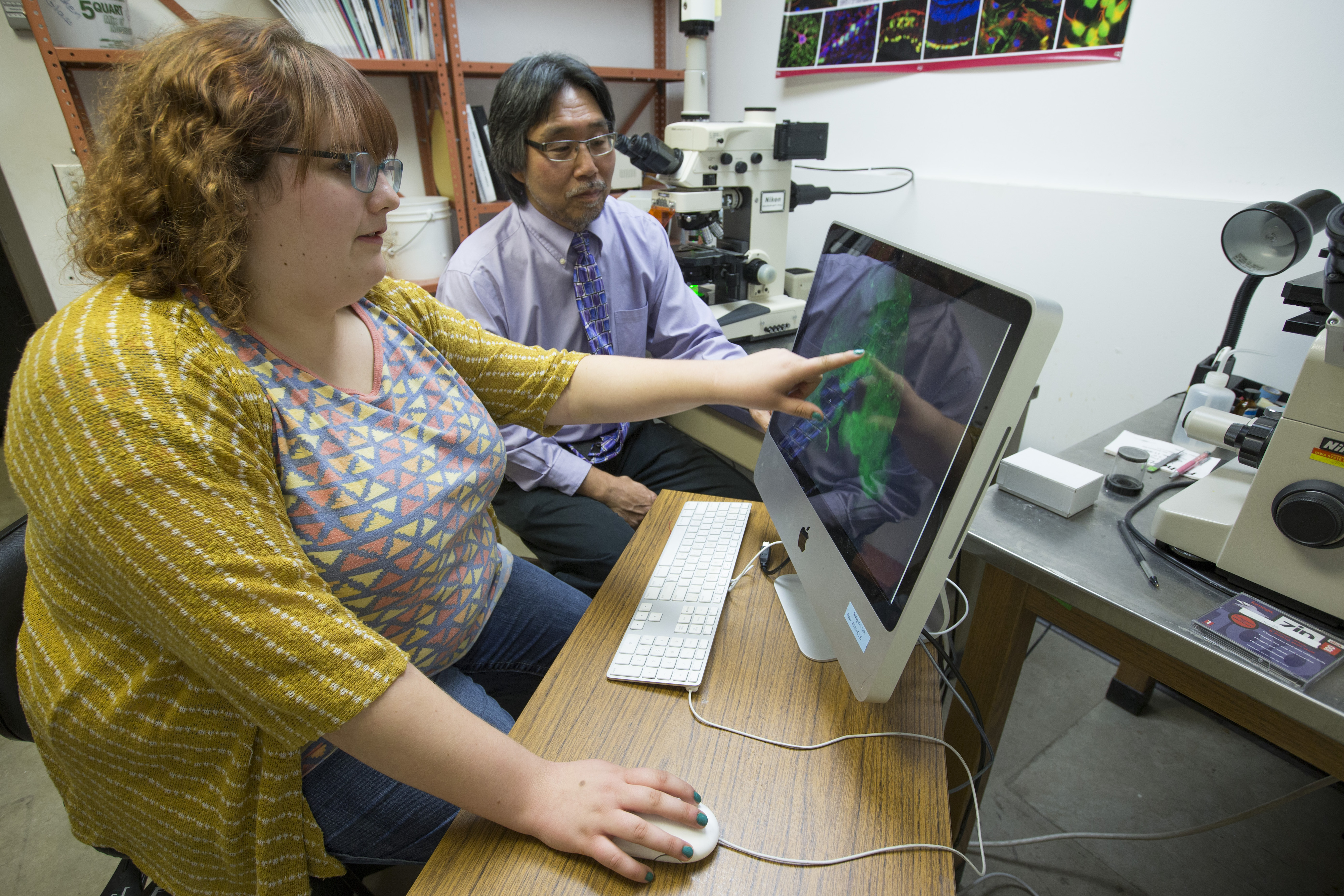
(Christopher Gannon/Iowa State University)
More than 150 undergraduates have worked in Don Sakaguchi’s lab since he started researching at Iowa State University in 1991.

(Christopher Gannon/Iowa State University)
“It’s really good for the students to see how experiments are conducted, how to design experiments, and also to find out if they like basic biomedical research,” he said. “Many of them haven’t really considered that as a career option.”
Kaelee Plante (genetics ’18) has worked in Sakaguchi’s lab since the spring of her freshman year. She heard about his research from the genetics peer mentor group and sent him an email before ‘losing her nerve.’ After talking with him about his research, she applied through the First-Year Honors Mentor Program and got accepted to work in his lab.
“Do not be afraid to approach professors,” Plante said. “All of my experiences have been because I had enough guts to email a professor while I was a freshman.”
Plante started off nervous to send that email — but today she is a mentor in the lab to another new student. An exchange student from the United Kingdom, who has never worked in a lab before, works on a project with Plante and a postdoctoral fellow, Elizabeth Sandquist.

(Christopher Gannon/Iowa State University)
The lab learns together, meeting for journal club to discuss related research; socializes together, having dinners once a semester; and serves together, packing meals for Meals from the Heartland once a year.
“We’re called Team NeuroCy,” Sakaguchi said. “It’s a fun activity to get the students involved in other things and to get to know each other.”
The Sakaguchi lab investigates experimental strategies to repair the damaged nervous system. Currently, nerve cells have limited ability to repair themselves. Sakaguchi and the students in his lab hope to change that through engineering stem cells.
“I just fell in love with the line of work,” Plante said. “I’ve learned so much and it’s really interesting how everything ties together. I’ll learn about something in one of my classes and then I’ll go to the lab and think, ‘What I’m learning right now applies to lab.’”

(Christopher Gannon/Iowa State University)
“We’re really interested in the bone marrow stem cells,” Sakaguchi said. “From the clinical standpoint, eventually you could isolate the bone marrow stem cells from the patient that has some neurological disorder or injury, and then take those bone marrow stem cells, grow them in culture, and engineer them in some way, then use them for therapeutic purposes back into the nervous system of the patient.”
Using stem cells that come from the patient would be advantageous because there would not be immunological rejection. There would also be minimal ethical concerns, something Sakaguchi explores with students in his Frontiers of the Discipline course, “Stem Cells and Cellular Engineering: Biomedical Applications, Politics and Ethics.”
“It gives them a broader view of stem cell politics, ethics, as well as the research,” he said.
Plante took the course the same semester she joined the lab to get a better idea of what a stem cell is and what it is capable of doing. As she looks forward to graduating in the spring and evaluates everything she experienced researching in Sakaguchi’s lab, she views it with no regrets.
“It’s made me into a better scientist,” Plante said. “I’ve learned a lot. I’ve made friends there. It’s definitely made my time here at Iowa State very enjoyable.”